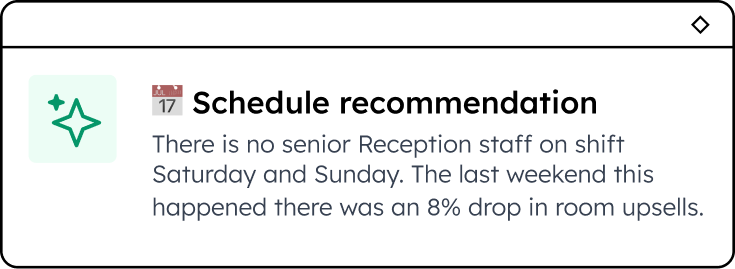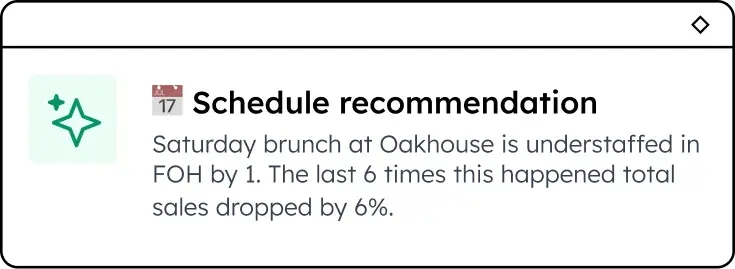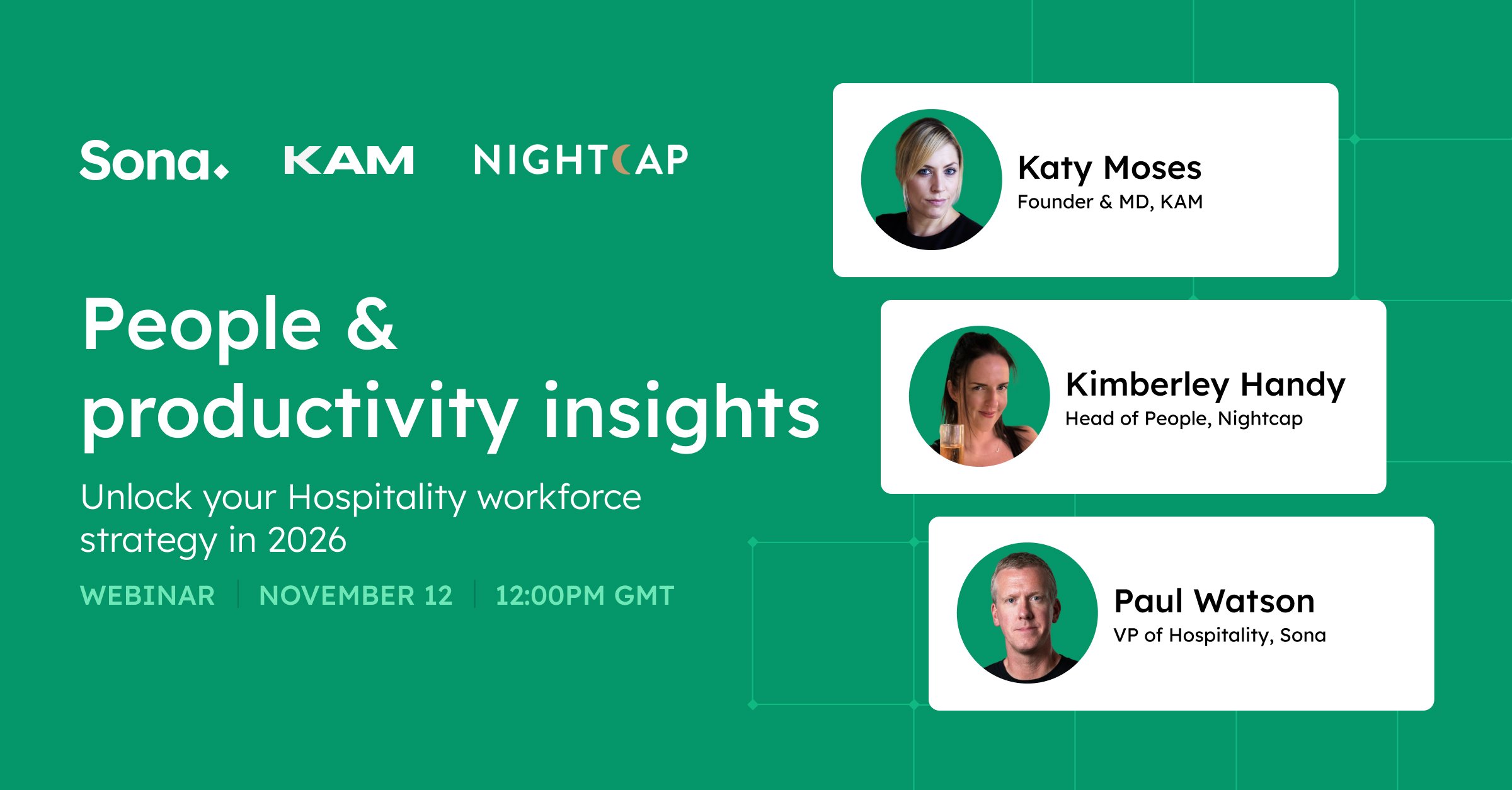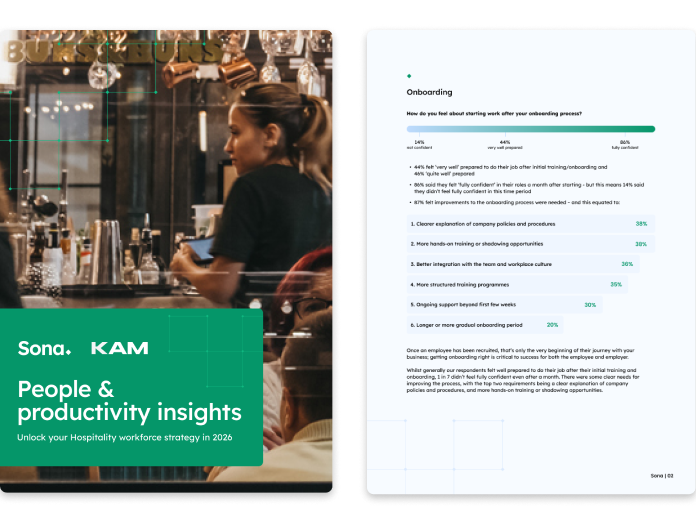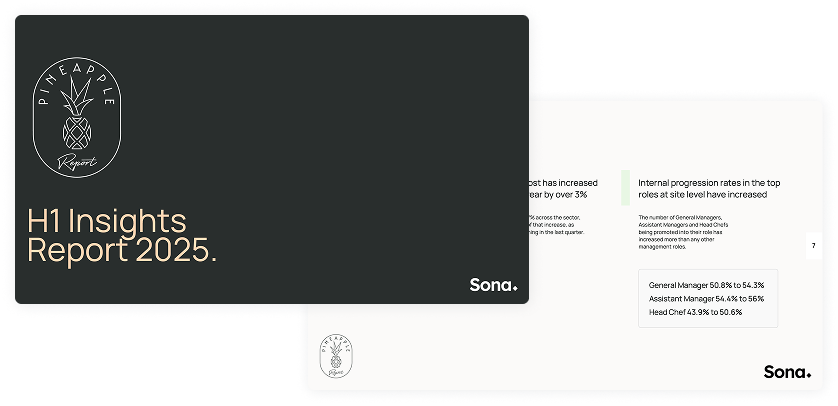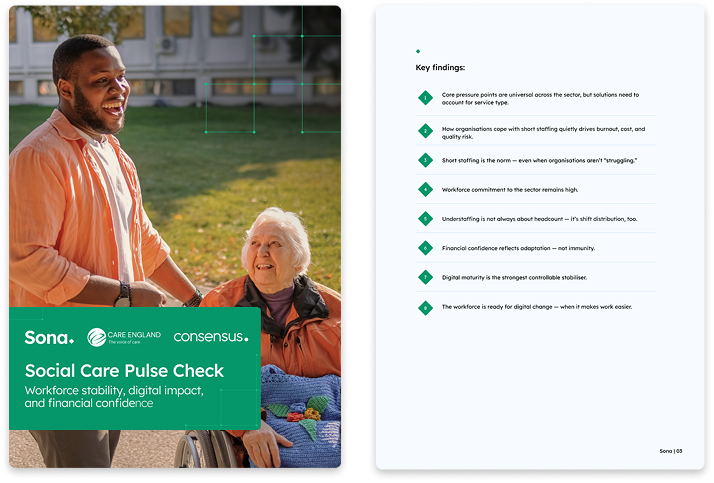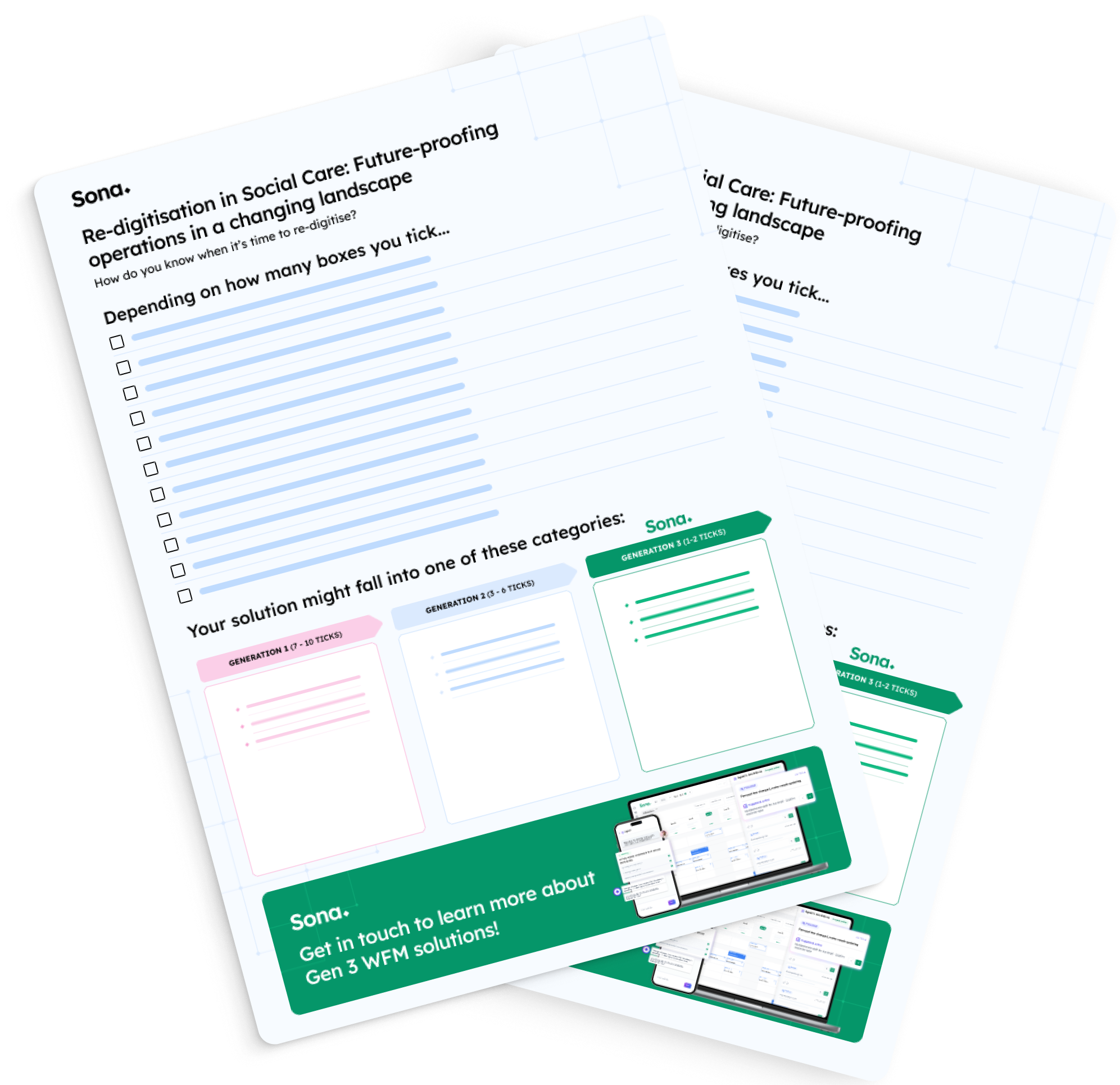How to cover your care home staffing needs while reducing agency costs
Staffing is at the forefront of a care organisation’s daily challenges. Whether you struggle with recruitment or are one of the fortunate few who don’t, having a staffing agency on call is still a necessity.
8 minute read
Agencies can provide reliable, short-notice employees to support your permanent team, and ensure residents receive the level of service they need.
However, that comes at a cost, with care homes in the UK spending 60% of total income on staffing and agencies accounting for 10% of that spending. Consistency of service is another concern - residents benefit from having the same people helping them, so relying too heavily on different carers every time there’s understaffing isn’t ideal for them, either.
For many managers, the solution is to keep trying to add more permanent staff. But with the current recruitment environment, that might take time, whilst safe staffing levels are a daily requirement. So, what can organisations do to improve the agency experience and keep costs down?
In this article, we’ll break down the different ways to reduce your agency spending without the need for additional full-time hires, while providing the best possible assistance to your care home residents. We’ll also cover a few methods to improve the agency experience, including simplifying the shift-assignment process and ensuring consistency of care, along with tips to reduce agency usage by retaining your staff.
4 proven ways to reduce agency costs in your care home
You might not be able to skip using agencies altogether, but there are ways to reduce the amount of work you give them and lower costs.
Here is a comprehensive list of ideas:
1. Create a staff bank
This is a pool of temporary or flexible employees who can step in as needed. Bank staff employees are usually more expensive than permanent ones, but more affordable than using an agency.
The main advantage of a bank staff is its flexibility. It lets care homes manage their workforce efficiently, gives their staff the freedom to take time off, and ensures that residents receive care from qualified professionals.
For instance, you could have a regular team of five nurses and two personal care assistants, along with a bank staff of three multi-skilled professionals. If one of your nurses needs to take sick leave, you can call someone from your bank staff to cover the gap at a higher pay rate.
The cost structure for a bank staff can vary. You might have to pay a fee when it's not in use, depending on your specific agreement. You can work out contract terms or fees to keep your bank staff running, or you could choose a pay-as-you-go approach, where you're only charged when you use the service.
Download The Big Reshuffle and learn more about how to attract joiners and retain existing employees!
2. Prioritise your employees to take-up available shifts with an internal marketplace
If you have an open shift, the first place to consult is your permanent staff. Ask all employees who aren't scheduled on that date if they can cover the shift. This might seem like an obvious recommendation, but it often happens that not all employees are consulted about available overtime because they either haven't expressed any interest before or they haven't picked up extra shifts in the past. However, that doesn't mean they might not have a change of mind.
To make things easier for managers, you can use your internal communication tool or a platform like Sona to post open shifts and encourage team members to review and potentially take them. If you use Sona, it will automatically track their work hours and adjust payroll accordingly.
By offering more shifts to your team members, you are:
- Saving money on agency costs
- Providing your employees with the opportunity to earn more
- Ensuring residents receive a consistent and high-quality service
While helpful, overusing this strategy without reviewing the workload of your team members could lead to them burning out. Gathering post-shift feedback and staying in touch with them will help staff feel supported when working overtime and prevent frustrations or burnout.
Pro tip: Sona also comes with an assign-to-agency feature that allows you to delegate those open shifts to an agency professional if no one from your team wants to take it. This way, you can use the same tool for handling internal and external staff.
3. Negotiate costs
Agencies usually charge a markup, on top of the assigned employee wage. Which means there could be room for you to renegotiate agency fees. Maybe you can offer to pay a couple of months in advance for a reduction in monthly costs or to gain alternative benefits–such as getting more senior personal care assistants or nurses on your account.
Bargaining with agencies can surprise you, and you might end up reducing the spending just by asking to redefine the contract details.
4. Retain your permanent staff
It is often cheaper to retain employees than to hire new ones or cover vacancies with agency staff, so investing in retention strategies might be a short-term cost with long-term benefits. But, with a 30% turnover rate in the UK adult care industry, keeping your team engaged can be challenging.
It can feel like financial incentives are the most obvious way to motivate employees to stay, but according to The Big Reshuffle study, that's not the only one. Feeling supported and valued plays a big part in why care professionals choose to stay. You can promote this by:
- Celebrating achievements regularly
- Installing a rewards and recognition system
- Checking-in with staff, especially if they've been working more than usual recently
- Assigning different levels of responsibility
- Offering growth opportunities
- Creating a culture of understanding, so they're able to request time-off due to personal commitments or unexpected events
- Showing them you care about their physical and mental wellbeing by making help available
You can make most of these things happen by using a tool like Sona. Your team can do daily wellbeing check-ins and summarise how they're feeling before and after their workday.
This way, you can better understand the reasons why people might be feeling tired, disengaged, or hopeless and take action to improve their experience. You can also use messaging in the Sona app to share announcements in the newsfeed, or recognise colleagues who have contributed recently or hit a milestone.
Keeping the job interesting for your permanent staff may also have the added benefit of reducing agency spending. You can cross-train them to take on different tasks and roles. This way, if you need someone to cover a shift, there may be more qualified individuals from your permanent staff who could potentially fill in. This can be especially valuable during peak demand periods.
Want to know why care employees are leaving and how to reduce churn? Watch The Big Reshuffle webinar.
Use software to control your expenses and improve the agency experience
Reducing agency costs is possible, especially if you combine multiple ideas and use automation in your favour. A tool like Sona can help you reduce staffing agency use by 60%.
Style Acre, a provider of supported living, day services, and community activities for adults with learning disabilities and autism, managed to go from spending up to £40k per month on agencies, to approx. £16k.
Their staff instantly took to the Sona app as the central source of truth. This meant that offering up-to-date open shifts to their employees became easy, and they were able to prioritise their own staff to fill gaps in the roster. Once open shifts were picked up by an employee, Sona automatically emailed and cancelled the agency worker within the allowed cancellation period.
"I can hone down when we use our agency colleagues to make sure that we're using them at the most cost effective time and spreading their usage that way."
Becky Speight - Style Acre Director of Operations
The main features that helped Style Acre achieve these results are:
- Shift filler: It’s possible that permanent staff isn’t taking additional shifts because they don’t know which ones are available. This shift marketplace empowers anyone from your permanent staff to claim open shifts easily. This has led users to fill 50% more shifts with their own employees and also reduce admin work, as managers don’t need to spend time manually asking everyone to take an open slot.
- Assign to agency: If an open shift is posted in the marketplace and it goes unclaimed for 24 hours, the manager can then allocate it to a preferred agency staff member listed in their database. The agency gets an automated notification which makes the job easier for managers. This process helps achieve greater predictability in staffing for both in-house teams and external agencies.
- Choose the same agency staff: The 'Assign to agency' feature also allows to select which agency professionals can see the open-shift notification. This way, managers can ensure they're staffing vacancies with people they trust, and who are already familiar to residents.
Reducing staffing agency costs: A multi-faceted approach
We’ve seen the important role staffing agencies play in care homes. However, they come at a higher cost and often can’t offer the same experience to residents as permanent staff. It’s only natural you’re looking for ways to reduce this spending.
Here’s a quick recap of the most popular ideas that can help reduce agency costs:
- Implementing a staff bank to delegate more work to them instead of agencies
- Prioritising permanent staff to try and cover vacancies with your in-house social care professionals
- Negotiating agency fees without changing your staffing model
- Investing in employee retention to reduce staffing costs altogether and promote cross-functional roles
Additionally, using specialised software like Sona can help you streamline staffing processes and increase efficiency and predictability in workforce management. Sona combines the functionality you expect from any workforce management software–including scheduling, time and attendance, and payroll–with dedicated features to engage your staff all in one easy-to-use platform.
By adopting these approaches, care homes can ensure proper staffing while improving resident care and reducing costs.
Frequently asked questions about reducing agency costs
How do I spend less on agencies?
There are multiple ways in which you can spend less on staffing agencies, including:
- Using bank staff
- Offering unfilled shifts to your permanent staff
- Renegotiating agency rates
- International recruitment
- Using a workforce management system to cover shifts with permanent staff and keep your team engaged
How do I encourage my staff to accept overtime shifts?
Convincing your staff to accept overtime shifts isn’t necessarily straightforward as there might be multiple reasons why they’re choosing not to take them. Some reasons include:
- The overtime pay isn’t attractive to them.
- They might have other responsibilities, such as being caregivers for others or studying.
- Your staff may not be aware of the availability of overtime shifts. Oftentimes, managers have to reach out to specific staff members which adds more work for them and can potentially lead to the same team members being assigned the available overtime.
- In multi-site organisations, there might be shifts available at different locations that staff isn’t aware of. Letting people pick up shifts when relevant to them, as per organisational rules, is key to achieving higher shift fulfilment.
In the first case, it’s a matter of finding an overtime hourly rate that is manageable for your organisation and motivating for employees. If your team has other responsibilities outside of work, you still want to make sure they’re aware of these opportunities in case they are available on occasion.
When it comes to overtime shift awareness, however, the right software should let your team look at all available shifts in your rota, as part of a shifts marketplace. Awareness of overtime and the option of choosing whenever it is convenient to them, without having to reach out to a colleague or manager, is essential to filling more shifts with your staff and reducing agency costs.
How do I make the agency booking experience better?
Overall, agencies are necessary to the Care sector. They can provide much needed staff at a short notice, which is an essential service to have on hand. However, a tool like Sona can significantly change the way you employ them. It allows you to prioritise your staff and drive shift fulfilment amongst them, while also improving the agency booking experience and helping you keep costs down.
Enjoyed this article? Let's stay in touch 👋
If you liked this article, why not subscribe to our newsletter to get the latest news and views delivered straight to your inbox?

